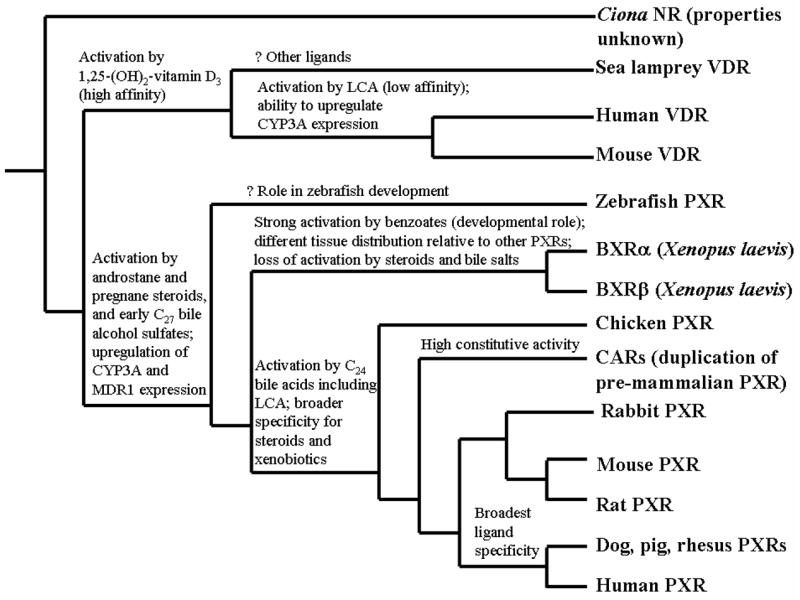Fig. (4). Proposed Phylogeny of the NR1I Subfamily Showing Functional Characteristics.

The phylogenetic tree is derived from known phylogenetic relationships between the animal species combined with pharmacological properties and tissue expression patterns. Characteristics included are activation by androstane steroids, pregnane steroids, C27 bile alcohol sulfates (representative of the earliest bile salts to evolve in vertebrates; current examples include cyprinol sulfate and scymnol sulfate), C24 bile acids (such as cholic acid or lithocholic acid, LCA), and benzoates (e.g., 3-aminoethylbenzoate in Xenopus laevis); ability to increase (upregulate) expression of CYP3A and MDR1; high constitutive (basal) activity; and tissue expression patterns. The possible developmental role of zebrafish PXR is highlighted by its strong expression in early life stages of the zebrafish [199].
